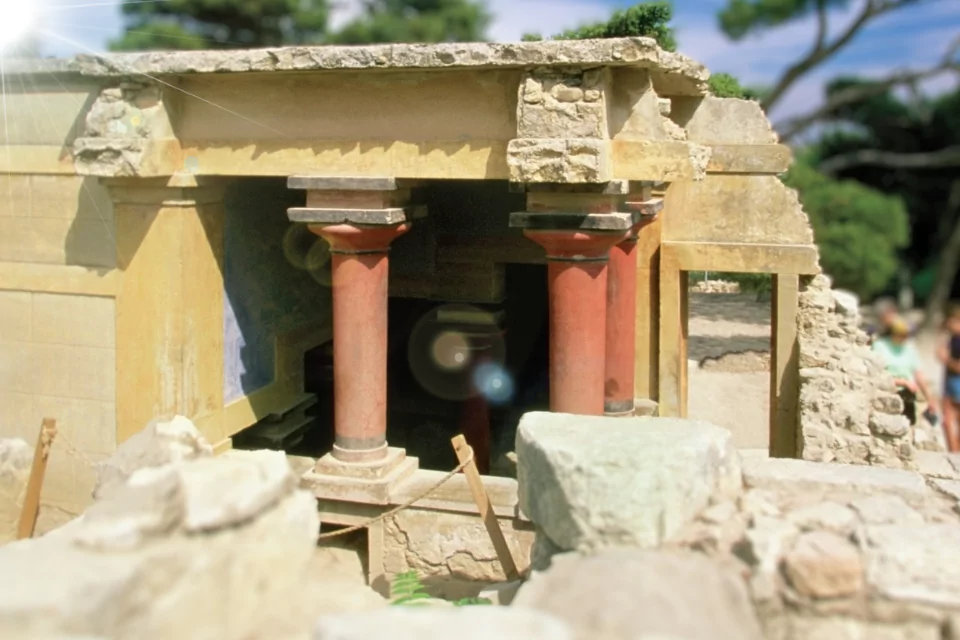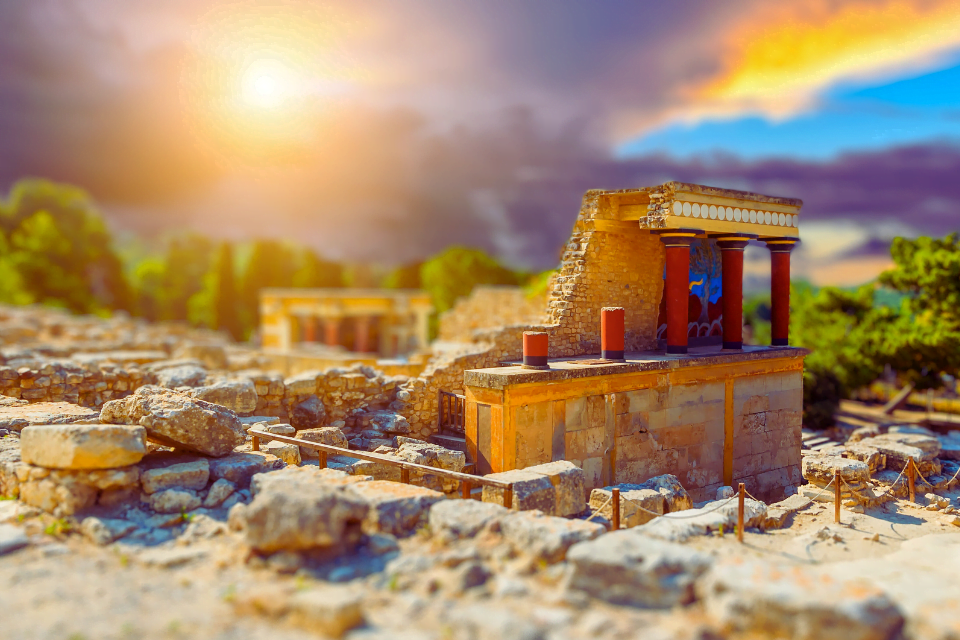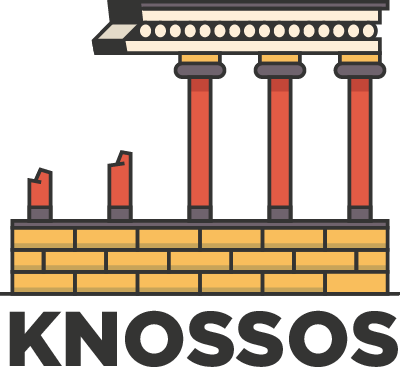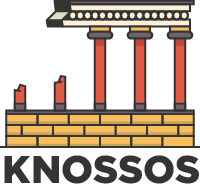
The Minoan Civilization – A Testament to Human Ingenuity and Progress
Table of Contents
The Minoan civilization flourished on the island of Crete between 2700 BCE to 1450 BCE and remains one of the most intriguing ancient civilizations that have ever existed. Despite the fact that much of their history has been lost to time, the enduring impact of Minoan culture on the modern world cannot be understated. From their impressive architecture to innovations in urban waste management, the Minoans were pioneers who laid the foundation for many advancements that we enjoy today. In this blog, we will delve into the achievements of this ancient civilization, their influence on Greek culture, and their connections with other ancient civilizations.

Origins of the Minoan Civilization
The origin of the Minoan civilization remains a mystery, but genetic studies suggest that they were descended from Neolithic settlers who migrated to Crete around 6500 BCE. They were likely influenced by other cultures in the region, such as Egypt, Mesopotamia, and Anatolia. Their complex trading system enabled them to establish trade links in the Mediterranean and beyond, which led to cultural exchange and the adoption of new technologies. Notable Achievements of the Minoan Civilization: The Minoans were known for their advanced social structure and hierarchy, which included priest-kings, nobles, and commoners. Their impressive architecture, including the Palace of Knossos, is a testament to their creativity and ingenuity. They were also pioneers in urban waste and stormwater management, with drainage systems visible in many of their ancient cities. Additionally, their flourishing trade and economy cemented their status as a prosperous civilization.
Historical Periods of Minoan Civilization
The Minoan civilization, a beacon of ancient culture and innovation, can be divided into distinct historical periods, each characterized by significant developments in society, architecture, and art. These periods reflect the evolution of Minoan society from its early beginnings to its zenith and eventual decline. Understanding these phases is crucial for appreciating the complexity and achievements of this ancient civilization.
Neolithic Crete: Early Minoan Period (c. 3000-2100 BCE)
The dawn of the Minoan civilization is marked by the Early Minoan period, where initial settlements began to take shape across Crete. This era saw the establishment of small communities and the development of trade networks with neighboring civilizations. Advances in pottery and metallurgy were notable during this time, laying the groundwork for the sophisticated society that the Minoans would become.
Neolithic Crete: Middle Minoan Period (c. 2100-1600 BCE)
The Middle Minoan period heralded the rise of the first palatial centers, such as those at Knossos, Phaistos, and Malia, which became focal points of political, economic, and religious activity.
This era is characterized by significant architectural advancements, including the construction of complex palatial structures that served as administrative, religious, and social hubs.
The period also saw the flourishing of Minoan art, with the production of fine pottery, frescoes, and seal stones, reflecting a society rich in culture and sophistication.
Protopalatial Period (c. 1900-1700 BCE)
Often considered a subset within the Middle Minoan period, the Protopalatial (or “First Palace”) period marks the construction of the first palatial complexes on Crete. This phase witnessed a significant increase in architectural innovation and urban planning, with palaces at Knossos and Phaistos being rebuilt and expanded after earthquakes. The social and political structure became more centralized, with the palaces serving as the heart of Minoan society.
Neopalatial Period (c. 1700-1450 BCE)
The Neopalatial (or “New Palace”) period represents the peak of Minoan civilization, with the complete reconstruction of palatial complexes following another series of earthquakes around 1700 BCE. This era is considered the golden age of Minoan culture, marked by unparalleled architectural, artistic, and commercial achievements. The palaces were not only political centers but also cultural and religious hubs, adorned with exquisite frescoes and filled with luxurious goods obtained through extensive trade networks.
Postpalatial Period (c. 1450-1100 BCE)
Following the decline of the palatial centers around 1450 BCE, possibly due to natural disasters or Mycenaean influence, the Postpalatial period saw the gradual decline of Minoan dominance. During this time, the Mycenaeans became the predominant power in the region, influencing the culture and administration of Crete. Despite the decline, the period was marked by continued artistic and architectural activity, including the construction of new settlements and the continuation of Minoan artistic traditions.
Final Palatial Period (c. 1380-1100 BCE)
This final phase of the Minoan civilization is characterized by the Mycenaean occupation of Crete and the integration of Minoan elements into Mycenaean culture. Despite the dominance of Mycenaean Greece, Minoan cultural and artistic influences remained strong, showcasing the enduring legacy of the Minoans even as their civilization faded into history.
Influence of the Minoan Civilization on Greek Culture
The Minoan civilization had a significant impact on the art, architecture, and religion of the Greeks. The Minoans were known for their vibrant frescoes and pottery designs, which were often imbued with symbolic meaning. These designs became a source of inspiration for Greek artists who adopted many elements of Minoan art into their own work. For example, the Minoan “Octopus” fresco, which depicts a group of octopuses, was recreated in Greek pottery designs such as the “Octopus Vase” found in Athens (another great civilizations flourished there!).
Moreover, the Minoans also introduced their gods and goddesses into Greek mythology, with some minor changes. For instance, it is believed that the Minoan goddess, “Britomartis”, was renamed “Diktynna” by the Greeks. Her original Minoan attributes as the protector of wild animals and the goddess of hunting remained unchanged, although her cult changed over time to fit within the Greek religious framework. Similarly, the famous Minoan bull-leaping fresco was also incorporated into Greek art as a representation of strength and agility.
The cultural exchange between the Minoans and Mycenaeans played a crucial role in shaping Greek culture. The Mycenaeans, who were influenced by Minoan trade and artistic styles, assimilated many Minoan traditions into their own culture. The Minoan influence is visible in the Mycenaean pottery style, which utilizes similar decorative motifs and shapes to those found in Minoan pottery. The Mycenaeans also adopted the Minoan technique of building palaces, which were the center of political and social life on the island.
The Minoans, too, were also influenced by Mycenaean culture, as trade and cultural exchange allowed for the sharing of religious practices. Mycenaean pottery with images of their gods was found in Minoan temples, indicating a possible assimilation of their pantheon by the Minoans.
In terms of religious practices, both Minoans and Mycenaeans practiced animal sacrifice. However, the Minoans placed greater emphasis on female deities, while the Mycenaeans venerated male gods such as Zeus and Poseidon. These differences were reflected in the assimilation of Minoan culture into Greek mythology.
Connections between Minoan Civilization and Other Ancient Civilizations
One of the most intriguing connections between the Minoan civilization and another ancient civilization is their similarities in hydro-technologies with the Indus Valley civilization. Scholars have discovered that both civilizations had a sophisticated water management system built primarily around underground channels. These channels were used for storing and distributing water for agricultural purposes. Additionally, both civilizations used gravity to control water flow, which allowed them to channel water to dry areas and prevent flooding.
While there is no record of direct contact between Minoans and Indus Valley people, experts believe that these similarities might have come from cultural and technological exchange. Trade between the two civilizations might have led to an exchange of knowledge, which resulted in the sharing of technology and ideas. It is also possible that travelers from one civilization witnessed and later passed on knowledge of the other civilization’s practices.
Other theories suggest that the similarities between Minoan and Indus Valley hydro-technologies might be attributable to common cultural and technological ancestry, with both civilizations having descended from an earlier, unknown civilization. As there is limited information regarding the Indus Valley civilization, it is difficult to draw conclusions regarding the connection. Nonetheless, the similarities between these two civilizations provide useful insights into early science and innovation and the distribution of knowledge in ancient times.
Further, it is worth exploring other civilizations that interacted with the Minoans. The Minoan civilization had extensive trade links with ancient Egypt, Cyprus, and the Levant. These trading relationships would have facilitated exposure to new technologies and cultural exchange. In addition, the Minoans were in contact with the Mycenaeans, who in turn interacted with the Hittites in Anatolia. This association resulted in the sharing of technologies and innovations, such as the development of chariots and writing.
Ancient civilizations engaged in an intricate network of relationships and cultural exchanges. These connections had unanticipated impacts on the evolution of cultures and societies. The similarities in hydro-technologies between Minoan and Indus Valley civilizations highlight the role of cultural exchange and technology sharing in early innovation. These connections offer crucial insights into the relationships between ancient cultures and the evolution of human society. Furthermore, it demonstrates the importance of studying ancient civilizations to better understand the intricate web of interactions and relationships that led to the progress and development of human societies. Ongoing Discoveries and Debates: The study of Minoan civilization is ongoing, with new discoveries being made every year. However, there are still debates and controversies surrounding their history and significance.
For instance, some scholars argue that the Minoans were influenced by external forces, while others contend that they were a self-contained civilization. Regardless, ongoing research is shedding more light on this fascinating ancient civilization.
The importance of studying ancient civilizations such as the Minoans cannot be understated. They were pioneers who laid the foundation for many advancements that we enjoy today, from architecture to waste management. Their influence on Greek culture and their connections with other ancient civilizations also highlights the interconnectedness of the ancient world. As more discoveries are made, we can continue to gain a deeper understanding and appreciation for the achievements of the Minoan civilization and other ancient cultures.




